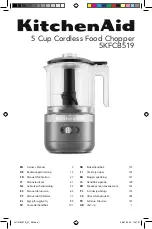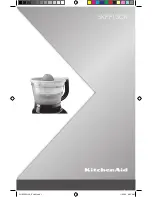
Enhanced Synchronous Serial Interface (ESSI)
Introduction
MOTOROLA
DSP56305 User’s Manual
7-3
7.1
INTRODUCTION
The Enhanced Synchronous Serial Interface (ESSI) provides a full-duplex serial port for
serial communication with a variety of serial devices, including one or more
industry-standard codecs, other DSPs, microprocessors, and peripherals that implement
the Motorola Serial Peripheral Interface (SPI). The ESSI consists of independent
transmitter and receiver sections and a common ESSI clock generator.
There are two independent and identical Enhanced Synchronous Serial Interfaces in the
DSP56305: ESSI0 and ESSI1. For the sake of simplicity, a single generic ESSI is described.
Each ESSI can be accessed through a port, as indicated in Figure 7-2. Any unused ESSI
pins may be used as GPIO pins.
The ESSI has three principal modes of operation, as shown in Figure 7-21. The Normal
mode of operation is used to transfer data at a periodic rate, one word per period. The
Network mode is similar in that it is also intended for periodic transfers; however, it
supports up to 32 words (time slots) per period. The Network mode can be used to build
Time Division Multiplexed (TDM) networks. In contrast, the On-demand mode is
intended for non-periodic transfers of data. This mode can be used to transfer data
serially at high speed when the data become available. This mode offers a subset of the
SPI protocol. The On-demand mode is programmed as a submode of Network mode.
The ESSI block diagram is shown in Figure 7-1. This interface is synchronous because all
serial transfers are synchronized to a clock.
Note:
This should not be confused with what is known as the Asynchronous
channels mode of the ESSI, in which separate clocks and frame sync signals
are used for the receiver and transmitter. In this mode, the ESSI is still a
synchronous device, because all transfers are synchronized to these clocks.
Since each ESSI unit can be configured with one receiver and three transmitters, the two
units can be used together for surround sound applications (which need two digital
input channels and six digital output channels). The ESSI can operate with more than
one active transmitter only in Synchronous mode.
7.2
ESSI ENHANCEMENTS
The Synchronous Serial Interface (SSI) used in the DSP56000 family has been enhanced
in the following ways to make the Enhanced Synchronous Serial Interface (ESSI):
Summary of Contents for DSP56305
Page 34: ...xxxii DSP56305 User s Manual MOTOROLA ...
Page 40: ...xxxvi DSP56305 User s Manual MOTOROLA ...
Page 41: ...MOTOROLA DSP56305 User s Manual 1 1 SECTION 1 DSP56305 OVERVIEW ...
Page 58: ...1 18 DSP56305 User s Manual MOTOROLA DSP56305 Overview DSP56305 Architecture Overview ...
Page 59: ...MOTOROLA DSP56305 User s Manual 2 1 SECTION 2 SIGNAL CONNECTION DESCRIPTIONS ...
Page 98: ...2 40 DSP56305 User s Manual MOTOROLA Signal Connection Descriptions JTAG OnCE Interface ...
Page 99: ...MOTOROLA DSP56305 User s Manual 3 1 SECTION 3 MEMORY CONFIGURATION ...
Page 119: ...MOTOROLA DSP56305 User s Manual 4 1 SECTION 4 CORE CONFIGURATION ...
Page 144: ...4 26 DSP56305 User s Manual MOTOROLA Core Configuration JTAG Boundary Scan Register BSR ...
Page 145: ...MOTOROLA DSP56305 User s Manual 5 1 SECTION 5 GENERAL PURPOSE I O ...
Page 149: ...HOST INTERFACE HI32 MOTOROLA DSP56305 User s Manual 6 1 SECTION 6 HOST INTERFACE HI32 ...
Page 150: ...6 2 DSP56305 User s Manual MOTOROLA HOST INTERFACE HI32 ...
Page 259: ...MOTOROLA DSP56305 User s Manual 7 1 SECTION 7 ENHANCED SYNCHRONOUS SERIAL INTERFACE ESSI ...
Page 315: ...MOTOROLA DSP56305 User s Manual 8 1 SECTION 8 SERIAL COMMUNICATION INTERFACE SCI ...
Page 347: ...MOTOROLA DSP56305 User s Manual 9 1 SECTION 9 TIMER EVENT COUNTER ...
Page 376: ...9 30 DSP56305 User s Manual MOTOROLA Timer Event Counter Timer Modes of Operation ...
Page 377: ...MOTOROLA DSP56305 User s Manual 10 1 SECTION 10 ON CHIP EMULATION MODULE ...
Page 411: ...MOTOROLA DSP56305 User s Manual 11 1 SECTION 11 JTAG PORT ...
Page 430: ...11 20 DSP56305 User s Manual MOTOROLA JTAG Port DSP56305 Boundary Scan Register ...
Page 431: ...Filter Co Processor MOTOROLA DSP56305 User s Manual 12 1 SECTION 12 FILTER CO PROCESSOR ...
Page 471: ...VITERBI CO PROCESSOR MOTOROLA DSP56305 User s Manual 13 1 SECTION 13 VITERBI CO PROCESSOR ...
Page 522: ...13 52 DSP56305 User s Manual MOTOROLA VITERBI CO PROCESSOR References ...
Page 554: ...14 32 DSP56305 User s Manual MOTOROLA CYCLIC CODE CO PROCESSOR Configuration Examples ...
Page 555: ...MOTOROLA DSP56305 User s Manual A 1 APPENDIX A BOOTSTRAP CODE ...
Page 568: ...A 14 DSP56305 User s Manual MOTOROLA Bootstrap Code ...
Page 569: ...Equates MOTOROLA DSP56305 User s Manual B 1 APPENDIX B EQUATES ...
Page 589: ...MOTOROLA DSP56305 User s Manual C 1 APPENDIX C JTAG BSDL ...
Page 590: ...C 2 DSP56305 User s Manual MOTOROLA JTAG BSDL ...
Page 600: ...C 12 DSP56305 User s Manual MOTOROLA JTAG BSDL ...
Page 601: ...MOTOROLA DSP56305 User s Manual D 1 APPENDIX D PROGRAMMING REFERENCE ...
Page 602: ...D 2 DSP56305 User s Manual MOTOROLA PROGRAMMING REFERENCE ...
Page 661: ...Y MOTOROLA DSP56305 User s Manual Index 11 ...
Page 662: ...Y Index 12 DSP56305 User s Manual MOTOROLA ...
















































